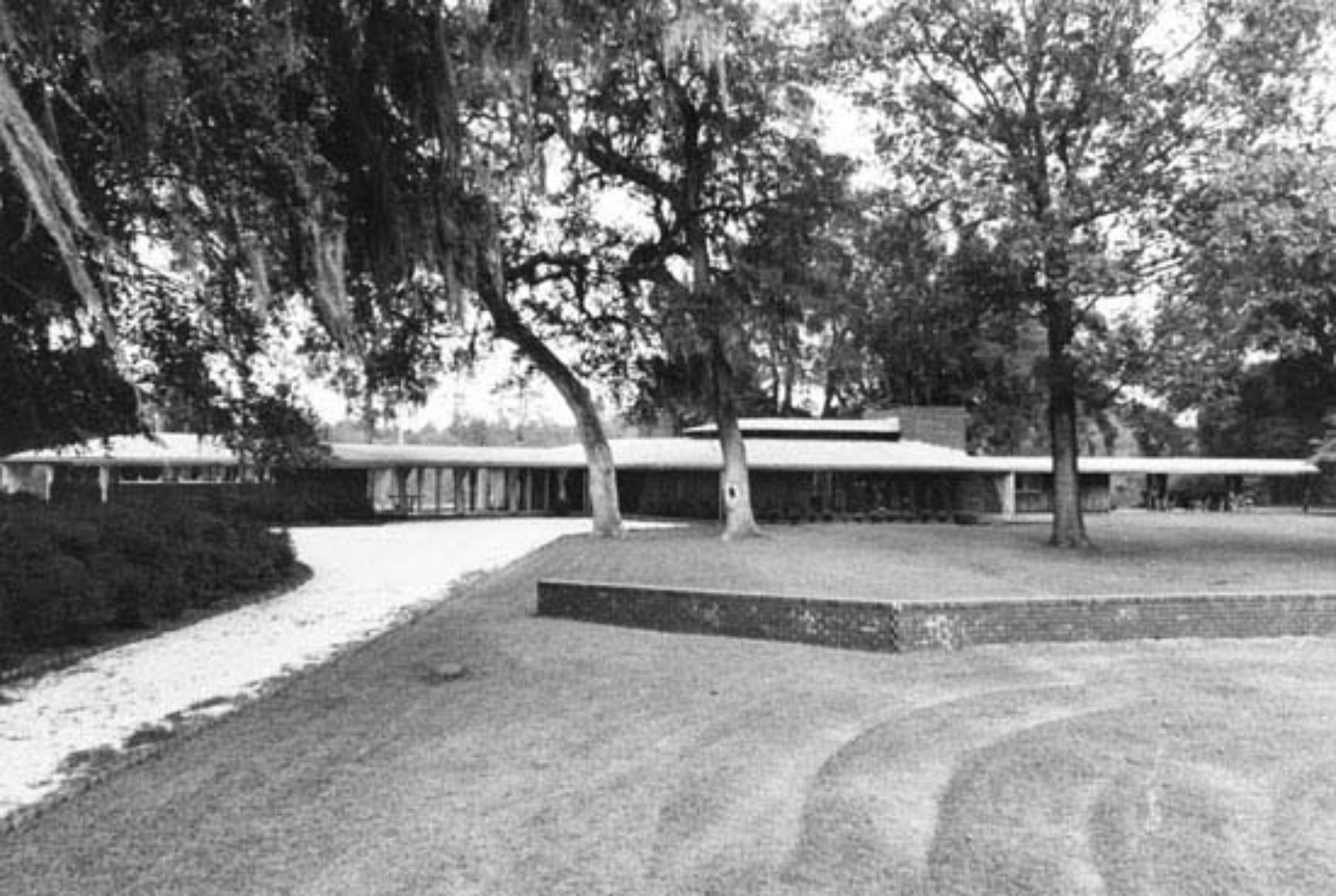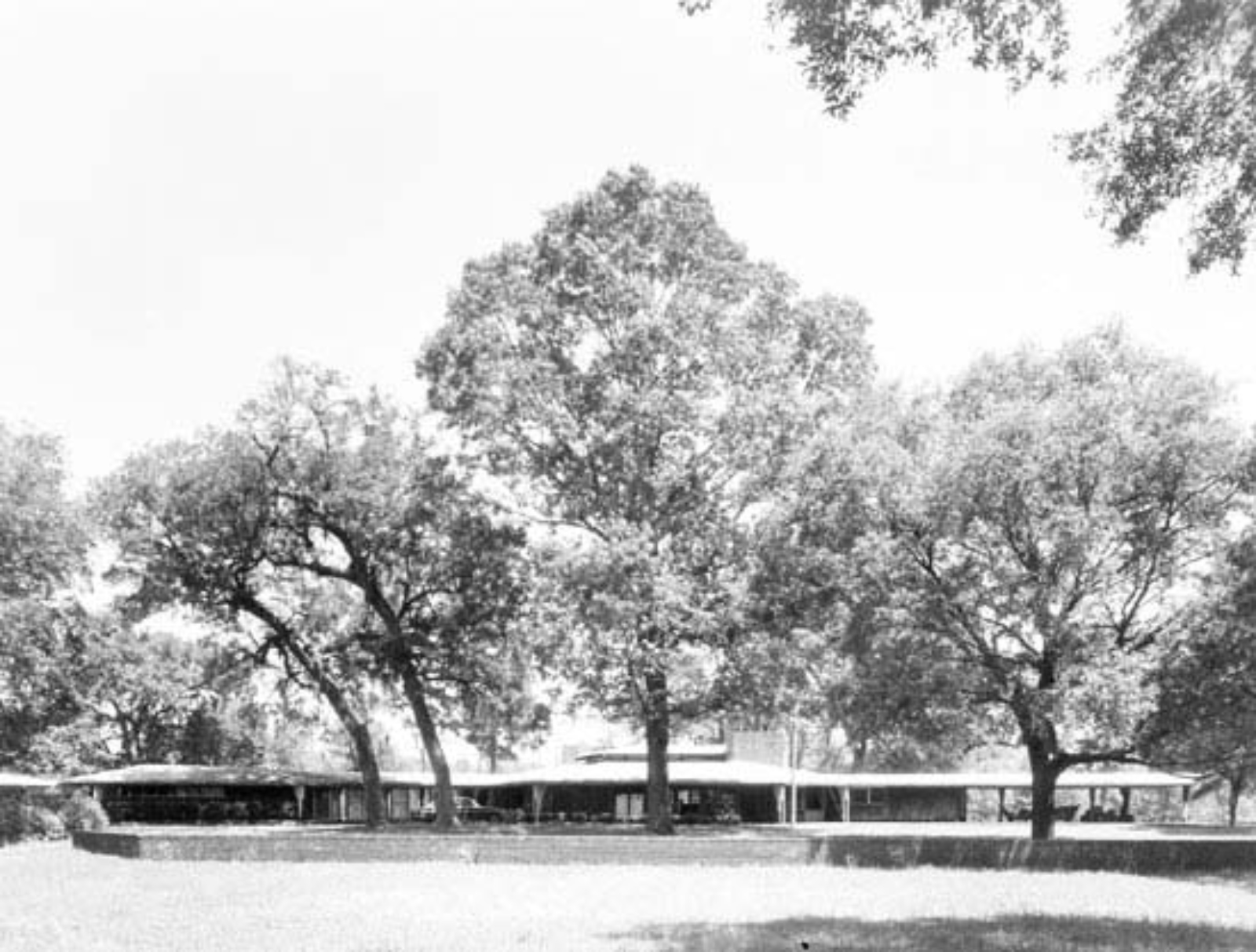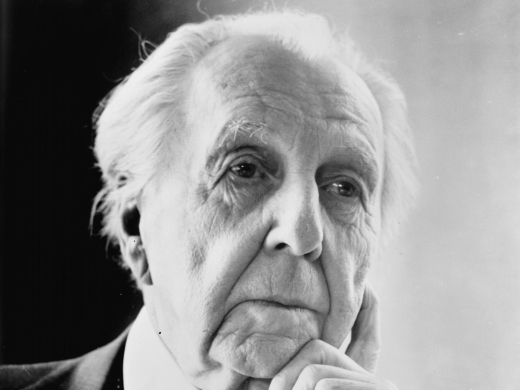Site overview
Located outside Yemassee in the backwoods of the South Carolina Lowcountry, Auldbrass Plantation is the only Southern Plantation designed by architect Frank Lloyd Wright. In 1939, builder C. Leigh Stevens called on Wright to design a self-sufficient, modern plantation for farming, hunting and entertaining. In keeping with his theories of organic architecture, Wright designed Auldbrass to exist in harmony with the Lowcountry landscape of which it is a part. Native cypress boards laid diagonally at 80 degree angles, were used on the exterior of the buildings and on the fence that marks the property’s border. Wright is said to have calculated the average angle that a live oak tree leans and concluded that 80 degrees was the ideal natural form for Auldbrass Plantation. Stevens owned Auldbrass until his death in 1962, when it passed on to his daughter, Jessica Steven Loring. After several subsequent owners, in 1987 the plantation was purchased by major Hollywood producer and Frank Lloyd Wright aficionado Joel Silver. Working from Wright’s original plans and enlisting the help of Wright’s grandson, Eric Lloyd Wright, Silver completed the architectural vision for Auldbrass Plantation, thus fulfilling Wright’s and Stevens’ dream and making Auld brass a true architectural treasure. (Adapted from official website of the city of Beaufort, SC)





